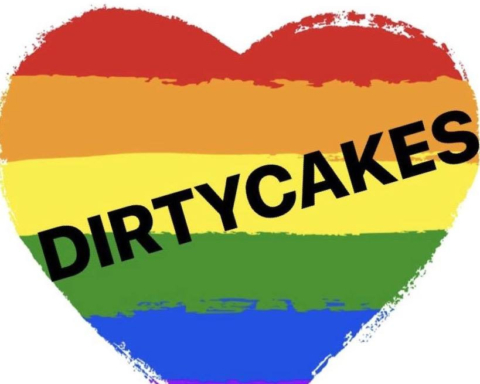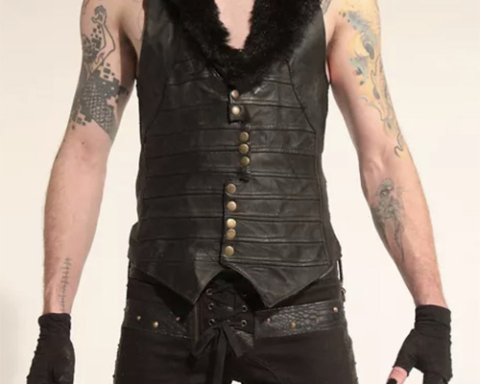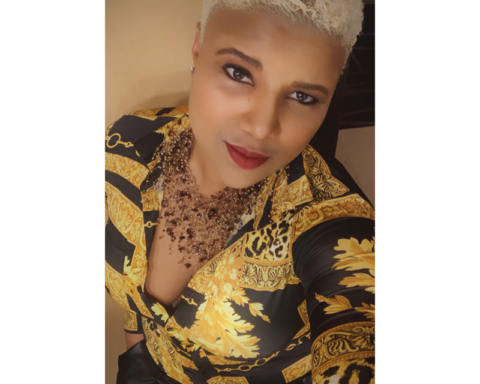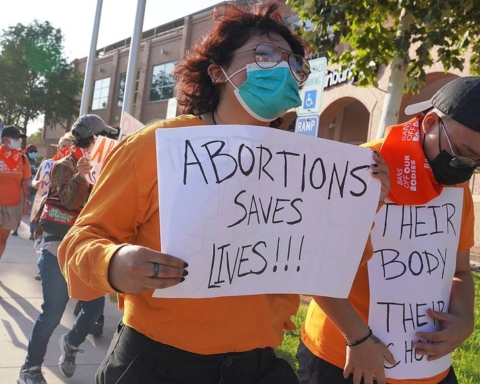I have a red plaid shirt that I cannot get rid of. It is buried in a storage container filled with clothes that I will never wear again, yet, I cannot find the will to toss any of it away. Especially within the fibres of that plaid shirt, holds early memories of my coming out days.
Around six years ago, I found myself in a sweaty club twirling on the dance floor, exchanging partner dance moves between two women who invited me. Excited and nervous, I already knew how the night would end. As we were about to leave, I spotted a plaid shirt crumpled up in a puddle of beer on the ground. I hurriedly ran over to my big find and picked it up. It smelled of slight musk and sweat but I liked it. I put it on and fastened the pearly white buttons all the way up to the top until the collar hugged my neck. During that time I was experimenting with my gender expression too. I had short cropped and bleach blonde hair that I wore slicked back exposing a single earring on one ear. Occasionally, I donned a snapback, ‘drop crotch’ pants or a leather bomber jacket. The addition of this plaid shirt to my evolving wardrobe seemed to fit my new aesthetic but the same old me; another step in coming to terms with my queerness and gender nonconformity. As I climbed out of bed the morning after, I put the same shirt back on. I walked out the front door as I left behind the two people still sleeping in their bed. The trajectory of this plaid shirt, in it’s material presence, chronicles a personal queer memory. Above all it catalyzes every queer moment of self recognition.
In the past couple years I have started work in self-discovery. My modes of dress have reflected stages in my personal growth both in my gender identity and its subsequent influence on my gender expression. Gender identity being the gender I feel within and my gender expression being how I present aesthetically to others. From my initial coming out to now, my wardrobe has drastically changed. At first, I used to assert androgyny with short buzz cuts and oversized t-shirts. Over time it transformed into fitted slacks, pea coats and hair tied into a bun, realizing I didn’t have to project “masculine” stereotypes to fit in. My closet is evidence of the different worlds of expression I traversed since coming out: defying gender stereotypes and patriarchal ideals that were ingrained in me at a young age.
As someone who was assigned female at birth (AFAB), ill fitting clothes and short hair meant I disapprovingly resembled a “boy” or a “lesbian”. Makeup and nail polish brought positive affirmations by my peers and lovers as I performed the “pretty girl” I should be according to society. In my late twenties I held on to these ideals in an attempt to satiate societal expectations and to preserve my “sex appeal”. Following a break up, I began to experiment with my look by chopping off all my hair and slowly replacing parts of my wardrobe. It was a visual act of resistance and identity reclamation that brought me from “pretty girl” and excitingly closer to “pretty boy”: make-up, baggy clothes, baseball hats, long-ish hair and button ups. The combination of aesthetics reflects a culmination of my complex gender identity: a gender non-conforming, non-binary and fluid femmeboy. For myself and for the majority of the queer community, clothes are a tool of self expression, visibility granting and history making. We need to come together to take up more space and to give society different ways of ‘seeing’ the complexity of gender.
So, in May 2017, I founded G(end)er Swap, a clothing outreach initiative for the queer community that is based in London, UK. It is a project that supports trans, non-binary and gender non-conforming individuals to access clothes in a community space. As the creative director of the project I travel across Europe to develop and deliver clothing swaps and workshops on gender and style. Additionally, I run a style archive entitled, QUEERTEXSTYLES, that documents the voices of LGBTQI+ individuals and their relationship with clothes. G(end)er Swap spreads awareness on the importance of ending gender norms, having more variety in mainstream fashion lines as well as diffusing the idea that gender neutral clothing options as well as changing facilities are way to create a more inclusive society. Additionally, G(end)er Swap is engaged in fashion activism, in an effort to bring together the gender non-conforming community and to support them in any way related to clothing needs or resources. It is in these spaces that we discuss together the barriers we face in accessing clothes or expressing ourselves. Historically, it has not been easy for queer individuals to always freely express themselves due to fear of harassment. Although 2018 has seen monumental changes in achieving gender non-conforming visibility, we aren’t entirely there yet. In response, G(end)er Swap took part in a art residency that set up a private shopping service for queer individuals. The project collected clothing donations and created a ‘free store’. Additionally, the project continues to support trans and nonbinary folks with trans specific items that aren’t always physically and monetarily accessible. Importantly, the project acts as a support mechanism to encourage our community to celebrate ourselves in public. We also use these gatherings to exchange styling tips and creative ideas for finding outlets of expression. The creation and implementation of a project such as G(end)er Swap encapsulates the idea that clothing, for the gender non-conforming community is power and in some cases, a power we have to take back.
Over the past year and a half that G(end)er Swap has been running I have had the opportunity to meet individuals from all over the world. To share our stories on coming out, the complexities of navigating public space and how our style ties in to it all. Our wardrobes reflect a broader narrative of self exploration, identity formation and queer experiences of belonging, community building and resistance. Our bodies are a canvas where clothes document a process of becoming and a complex history with infinite stories of queer self identification.
By: Santina Sorrenti





